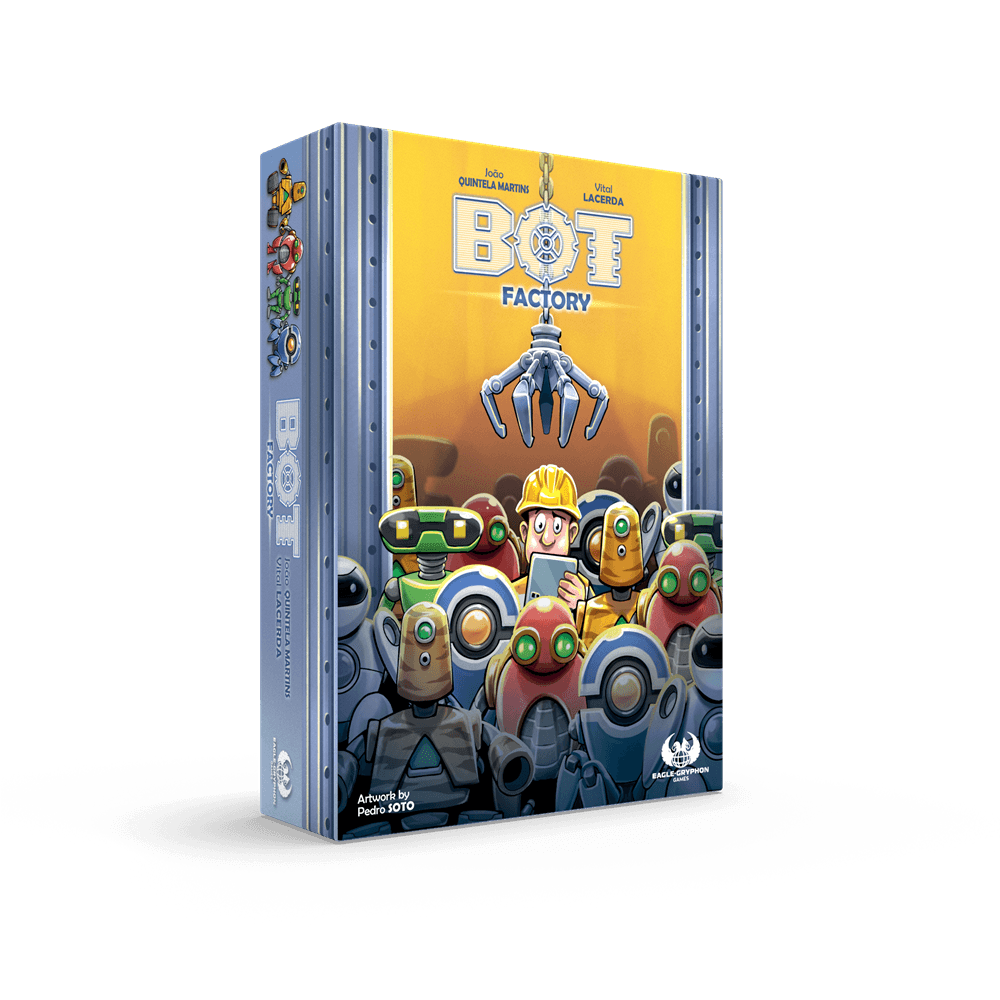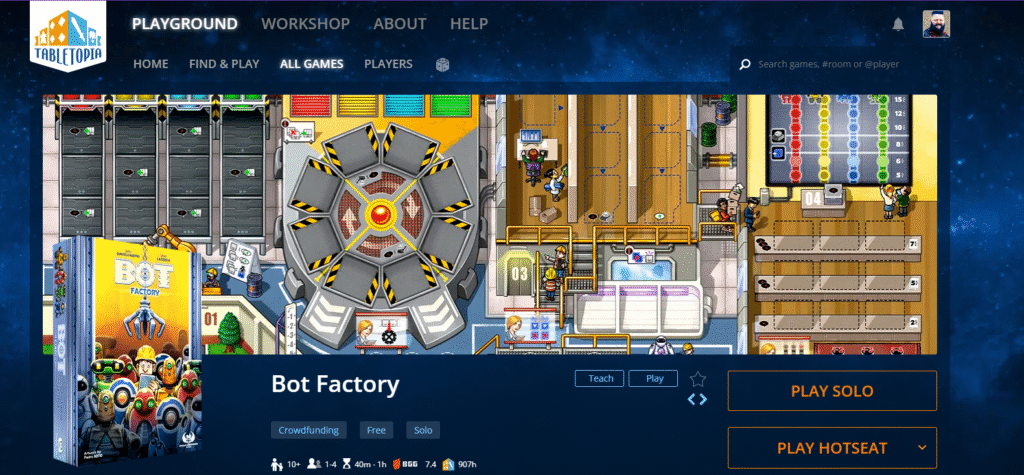
This game is an amazing concept for educators, particularly any involved in project management. The key mechanic that makes the whole game work is the Kanban method.
This is one of those games where both the premise and the mechanic make it incredibly clear what the educational benefit of the game can be.
Kanban is a style of project management that is very popular, involving selecting tasks and moving them along a completion board as you complete the components of them.
That is the entire premise of this game. You have to choose your projects, collect the relevant parts, assemble them then deliver them to your customers. On your turn you choose where your worker will be stationed – will they be:
- Assembling bots?
- Collecting parts from the spinning components wheel?
- Submitting assembled bots?
- Or collecting new projects?
It seems simple enough, but everyone is working on the same board. The actions of the person before you may have a catastrophic impact on the plans you had. Or your actions may disrupt the plans of the person after you.

You may have your mind set on finishing off that red bot and using it to complete your order next turn, but the person in front of you finishes it off first and gains the bot, leaving you unable to complete your task this round and potentially handing victory to the next player along.
There is also a system involving speech bubbles. To use certain abilities you need to have a sufficient number of speech bubbles to spend. These abilities are the strongest options in each section, giving you greatly increased chances of victory. This represents the fact that teams should be talking to one another, not working in siloed silence if they wish to complete their tasks quickly and efficiently.

This seems like it may be quite contrived, surely a system used by businesses world wide wouldn’t have problems like this occurring? Except they do. If a Kanban system is not implemented well, and teams are competing with one another rather than working together you often get situations like this where a person is unable to progress with a task because other teams are using the resources before they can.
Using this game in an educational context allows you to explore that dynamic in a safe, and fun, environment. It can show your students where the pitfalls of kanban can be, and how important it is to have everyone working together, not against one another.

As with many games I suggest, this one is available on tabletopia for you to try and for you to guide your students towards. This removes the need for physical components and space, and allows it to be played on student’s personal devices.

Usage ideas
There are a few ways you can use this game in your teaching and learning
Modelling conflict
- Play the game from start to finish and ask the students to focus on what impact their decisions are having on others.
- Explore how this scenario occurs in the workplace
- Ask them to come up with revised rules that would allow every worker to be successful.
- Explore what would be required in the workplace for the revised approach to work in the real world.
Problem solving
- Set up the board so the students are at a distinct disadvantage
- Give them the challenge to turn their situation around
- Explore how they could apply the solutions and failures they encountered in the real world.
Managerial impact
- A mechanic in the game is the presence of the managing consultant ‘Sandra’
- Each turn she takes over an entire section of the board that the players are unable to use and completes predefined actions that will affect the board state for future turns as well as potentially disrupt player’s plans.
- Following a game, have a discussion about the impact of Sandra on the outcomes. Was she a help or a hindrance? How did students use her presence to improve their own outcomes?
- Then tie that discussion into how in the real world there will be managers and consultants who do come along and fundamentally change things. Discuss strategies for managing their expectations, and minimising their impact.
In Summary
This has just been a very quick overview of a game that both mechanically and thematically could have a positive impact on your teaching and learning of the topic of Kanban methodology. Let me know in the comments if you will consider giving it a go and if so, how did it turn out for you!
